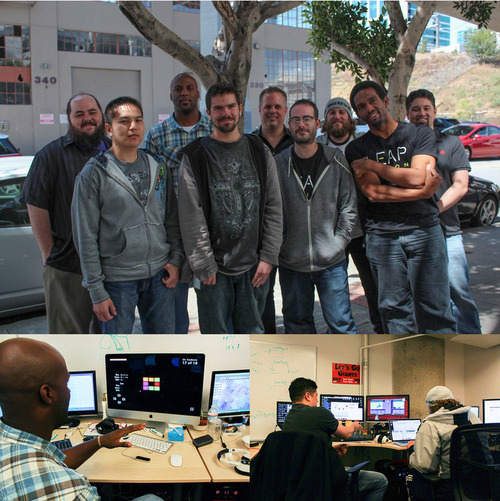This week we’re rolling out the latest stage of the Leap Motion beta to our early access developer community. Thousands of developers around the globe will soon be testing the consumer experience to help smooth the rough edges and hunt for bugs.
It took years to design and build the Leap Motion Controller, and our incredible team of engineers is continually working to maximize its full potential. Over the coming weeks, you’ll meet the amazing people on our software, hardware, and web development teams – the technical wizards who work behind the scenes to bring 3D interaction to the world.
It took years to design and build the Leap Motion Controller, and our software engineers are the people who bring the potential of the device’s hardware to life. Earlier this week, we asked some members of our software engineering team to talk about their lives, work, and passions.
While you can read their full stories and insights on our blog, Keith Mertens – our Mathematics Research Program Manager – had some special thoughts to share with the developer community.
What brought you to Leap Motion?
The Leap Motion technology is so much fun to play with and develop on. As an applied mathematician, there’s no limit to the number of open directions that can be explored on this platform. Every day is an adventure into invention, innovation, and creativity.
What are your favorite applications for the Leap Motion Controller? What inspires you?
I’m inspired when I see people doing things with the Leap that would otherwise be impossible. Thinking out of the box, in a new way which takes advantage of the immersive three-dimensional environment. Some of the demos our team has built, like Isaac Cohen’s musical universe, Raffi Bedikian’s clay molding app, and Pohung Chen’s Leap Force (which allows you to have “the force” in a first person shooter scenario) are great examples of directions I would love to see advanced as time progresses.
What’s the biggest challenge you’ve overcome while working on the Leap Motion software?
One of the biggest challenges we have is living up to our own expectations. When people give feedback that they think things are ready to ship, we still find ourselves internally toiling over small details we still believe can be improved.
How can our developer community contribute to the future of the Leap Motion SDK?
We love to hear pointed feedback, comments, and requests for where you would like to see things go next. These comments and suggestions, which are passed along by the Developer Relations team, often strongly guide how we prioritize our resources. If one developer is noticing odd behavior, or wishing they had additional features, chances are that many, many others are too.
Game designers around the world have been inspired by the Leap Motion Controller’s incredible speed and accuracy to create games that take advantage of our unique 3D interaction technology. Last week, we caught up with Patrick Hackett – a game designer with popular indie developer Double Fine Productions – about his creative process in developing for the Leap Motion Controller.
While new interactive technologies offer near-infinite possibilities for app creation, few things can capture our imagination quite like games. Over the past several months at Leap Motion, we’ve seen hundreds of developers building games in a variety of genres, pushing our 3D interactive technology to the limits. Today, in honor of E3, I’d like to provide some insights on how our developers are transforming the gaming experience.

The Leap Motion App Review Team: Matthew, Stephen, Bobby, Michael M., Michael Y., Sam, Collin, Ernest, Shaun
Over the past eight months, our developer community has been building some amazing applications for the Leap Motion Controller. When they’re ready to submit their apps to Airspace, our online app store, that’s when the App Review Team springs into action.
In the first of our Inside Leap Motion series, we talk to Michael Yasko, Senior Manager of Developer Relations & App Review, about his team and their work.